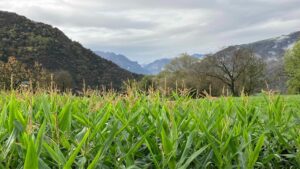Abstract/Description
Ecological restoration remains relatively under-utilised in the French Alpine national parks compared to other conservation measures. However, many areas within both the core and buffer zones of these parks have been significantly transformed by human activities. The construction of buildings, ski runs, roads, and trails for tourism, pastoralism, and forestry has resulted in the proliferation of man-made slopes at ever higher altitudes and on steeper terrain. These slopes are often unstable and devoid of vegetation, posing serious challenges in terms of safety, biodiversity loss, and landscape degradation.
For over a century, civil engineering solutions have dominated efforts to stabilise these slopes and control erosion. More recently, however, ecological restoration approaches—particularly those using soil bioengineering techniques informed by plant ecology and ecosystem science—have begun to emerge as alternatives. Our research seeks to understand how these initiatives are perceived and implemented by key stakeholders through the lens of sensemaking.
This study is conducted within a living lab dedicated to the development of nature-based solutions in Les Trois Vallées, within the Vanoise National Park (French Alps). Using semi-structured interviews and participant observation, we are engaging with a wide range of stakeholders, including protected area managers, ski resort operators, researchers, conservationists, farming and forestry professionals, and local authorities. We expect to uncover a variety of ways of making sense of ecological restoration in protected areas, leading to both synergies and tensions—within park staff and between different stakeholders. These insights will contribute to a broader understanding of how ecological restoration is framed, negotiated, and integrated into alpine conservation strategies.


